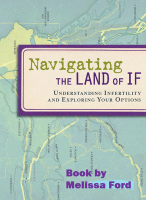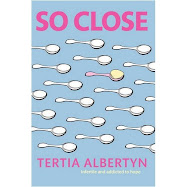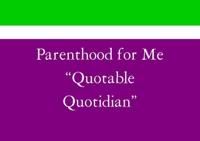
When The Observer's art critic Laura Cumming was longing to have a child, she found herself looking at art in a new light. Images of fertility were everywhere, from fruitful nudes to the Virgin Mary, frustrating and fascinating her by turns. Now the mother of twins, she revisits that difficult time to examine the complicated relationship we have with pictures in our darkest hours...
One spring morning a few years ago - well five, in fact: one never forgets such things - a postcard dropped through my door. It showed the Madonna del Parto by Piero della Francesca, a painting I thought I knew well. You probably know it too, at least from reproductions, the original being on display in a former village school in Tuscany. It shows two angels drawing back the curtains of a tent-like pavilion to reveal a Madonna with her eyes gently lowered: a column of calmness, beautiful in blue, one of Piero's magnificently still, silent figures.
I did a double-take. I had always thought the Madonna was supposed to be pregnant - she has one hand to her waist as if easing the weight, and the other just below her breast where a seam in her overdress has been unstitched, as if her clothes were growing too tight. But I wondered, suddenly, whether she was not pregnant at all, just gesturing at a potential pregnancy, representing a mystical future she could only imagine. Like so much Christian art, perhaps the Madonna was only a symbol; or worse, centuries of people looking at the picture had mistaken the bulk of her robes for a gently swelling belly. After all, anyone who thought that Arnolfini's wife was pregnant in Jan Van Eyck's famous painting had only fairly recently been told to think again. Costume historians had established, once and for all, that the yards of green cloth she holds swagged up to her waist are not a sign of fertility, just Flemish high fashion of the 15th century.
I know exactly why I had this brief crisis of faith in Piero's mysterious painting. I had just believed - hoped - that I was pregnant: pregnant again after the loss of a baby. It was inconceivable to me (and inconceivable is, alas, the vicious word that always springs to mind in these circumstances) that I was not, after all, pregnant; or at least not very pregnant. They call it a chemical pregnancy, as if it existed only in a science laboratory and not in the hearts of the parents, and it is generally over within weeks. I found I could not look at paintings or sculptures of pregnant women at all at that time without wondering whether they were really, conclusively pregnant.
We need images, quite apart from anything else, where we have no words. The postcard was an encouragement from a friend who couldn't possibly have guessed how bad the timing would be. Grateful as I am, it's not actually the painting I would choose in any case. I don't know that pregnancy per se is what one wants to see when struggling through the sunless corridor of infertility, any more than photographs of other people's longed-for babies on the walls of IVF clinics.
But how is an artist to represent fertility when it is an unknown quantity - an entirely invisible state? Nobody knows who has it and who doesn't, at least from the outside. In Piero's day, the only manifestation of fertility would have been pregnancy itself; the only proof for the purposes of art the growing belly or - to use an atrocious but common fertility clinic phrase - a 'take-home baby'. The first proof of it nowadays, oddly enough, is still graphic: that notorious double blue line on the test, although even this is not quite a proof. I have seen lines so faint you could barely make them out by the light of 100 suns, gone ahead and celebrated, and then seen them vanish in the very next test.
Fertility in art is generalised, if I may so generalise. It is an attribute in search of a body. It is a ripe bosom and child-bearing hips, or a healthy young nude with an inviting smile, or a woman in some frieze bearing a basket of apples or corn. It is plentiful Ceres, Roman goddess of harvest and motherly love (a concept, you notice, not a human being) or her Greek counterpart Demeter, scattering seeds, her name apparently meaning distribution-mother. It is, I am sorry to say, the figure made 25,000 years age by an anonymous man in Austria, who picked up a piece of limestone and carved it into a nude woman with outsize breasts and Zeppelin thighs (but no face of course), that posterity has laughably dubbed the Venus of Willendorf.
Fertility in art is availability plus abundance, with an optional lusty wink. It is, in short, total embarrassment. And an embarrassment not even restricted to the depiction of women, let it be freely said. Who, coming across it in the National Gallery, hasn't squirmed in front of David Tenier's rude personification of Spring as a gardener carrying an upright young tree in a pot before him: fertility as a huge comedy phallus.
And its opposite: infertility? No sight gags there; no sights at all. I can hardly summon even one image to mind. Barren land, seeds cast on stony ground, the empty vessel, the drought - Biblical metaphors, all, that speak irrefutably for themselves without need of further illustration.
Perhaps one should not be surprised that art has trouble representing fertility except as animal, vegetable or allegory. For fertility is a curious, secret thing, something unknown, invisible, unmeasurable until, like so many of us, you end up in a clinic being told that you do not have very much of it.
Fertility is a potential, pure and simple, abstract. But art has always had to invent images for states of being that can't be discerned in the visible world. Depression, for instance: think of Dürer's Melancolia, that large woman sitting heavily on her stool, head in hand, face like thunder, surrounded by a sizeable junk yard of allegorical bric-a-brac from which she can't escape and in which nothing is clear, uplifting, bright or ever likely to improve. Or Munch's Scream - that peculiar worm-like figure clapping its hands to its face while the air around him reverberates with a long howl of psychic pain. Not for nothing is it the most instantly recognisable image, I'd say, in modern art. If you want something to give you courage, look at Delacroix's deathless Liberty at the Barricades, best foot forward and that brave high arm leading the citizens onwards. If you want to stop arguing about who's turn it is to do something dull but needful about the house, look at Rembrandt's Jewish Bride, the tenderest image of harmonious love and the pleasures of marital peace imaginable.
We should use art. It's a necessity, not a luxury for connoisseurs and collectors. And what painter ever made a picture just to be seen by one or two viewers? Our great public collections are for our great mutual benefit: to be plundered for comfort, new ideas, moral lessons, tales of the lives of others and, like music, for inspiration and encouragement.
During the years I have longed, beyond words, for a child, I have often gone to the National Gallery for inspiration. But there are only one or two paintings of women with child (none of them, incidentally, the Virgin Mary: Piero's Madonna was always uncommon). Naturally, there are cornucopias of fruitful nudes.
In my work as an art critic I came across Anish Kapoor's quasi-mystical sculptures, rounded womb-like cavities that seemed to glow by cunning optical effect. I saw Peter Randall-Page's fertile stone forms, rounded again, sometimes gathering soft moss outdoors in the landscape. I looked at Helen Chadwick's ethereally beautiful necklaces made of images of rejected embryos - five cells interlinked like Olympic rings, silver-blue, just as they are beneath the microscope in reality. I looked and felt as sorrowful as Chadwick must have hoped.
I remember that Ron Mueck, the Australian super-real sculptor my fellow critics like to despise, but I don't, made a sculpture during a residency at the National Gallery clearly with the Virgin Birth in mind. Half life-sized, and astoundingly real right down to the last follicle and flush of the cheek, it's a mother seeing her baby for the first time only seconds after birth, both of them utterly dazed.
Labour is so recent the mother's hands are still clenched, her toes flexed as she struggles to raise her head high enough to see the baby on her stomach. What she feels is not yet obvious either to herself or the viewer - how can she know who this person is; we call them little strangers, don't we? - a being only just made visible. It is the precise moment before amazement gives way to emotion. Who is this child and where did it come from? It's a question the sculpture itself raises since there seems to be no explanation for the baby's position so high upon the mother's stomach, the chord still uncut. How did this miracle get here?
Science still doesn't have many useful answers. You can know every single fact of reproduction and yet not understand why it isn't happening. You can be as expert, very nearly, as the experts themselves. But unexplained infertility remains the commonest kind, and almost as inexplicable is the way it may suddenly come to an end.
Fertility clinics have no idea what to put on their walls. Something pink, something soothing, something vague and inoffensive as the ambient, computer-generated waterfalls and glades displayed under the comically literal banner 'Pictures' at Ikea.
I suppose they don't want to raise your hopes to a pitch. But it is in these clinics that some of us may be blessed enough to see the first, best, most astonishing image of fertility finally coming to life - in my case the little dark universe on the scanner twinkling with two sequins of light: my twin daughters' tiny beating hearts.
And how does that feel? I don't have words. Let me give you an image instead. It is a painting made a very long time ago by a monk working alone in a cell, a man whose imagination enters more deeply than one can believe, almost, into this timeless, ever-recurring moment. A woman is receiving the news that she has conceived - not from a doctor, as you guessed, but an angel. In fact the split-second of the telling is in itself the conception. Mary leans forward, her hands crossed over her body as if receiving a blessing, but also as if protecting the new life there. Her face is a graceful portrait of that singular moment between universal awe and the dawning of more bewildering emotion. It is Fra Angelico's Annunciation - sudden revelation made visible.
Laura Cumming, The Observer
Sunday March 30, 2008














No comments:
Post a Comment